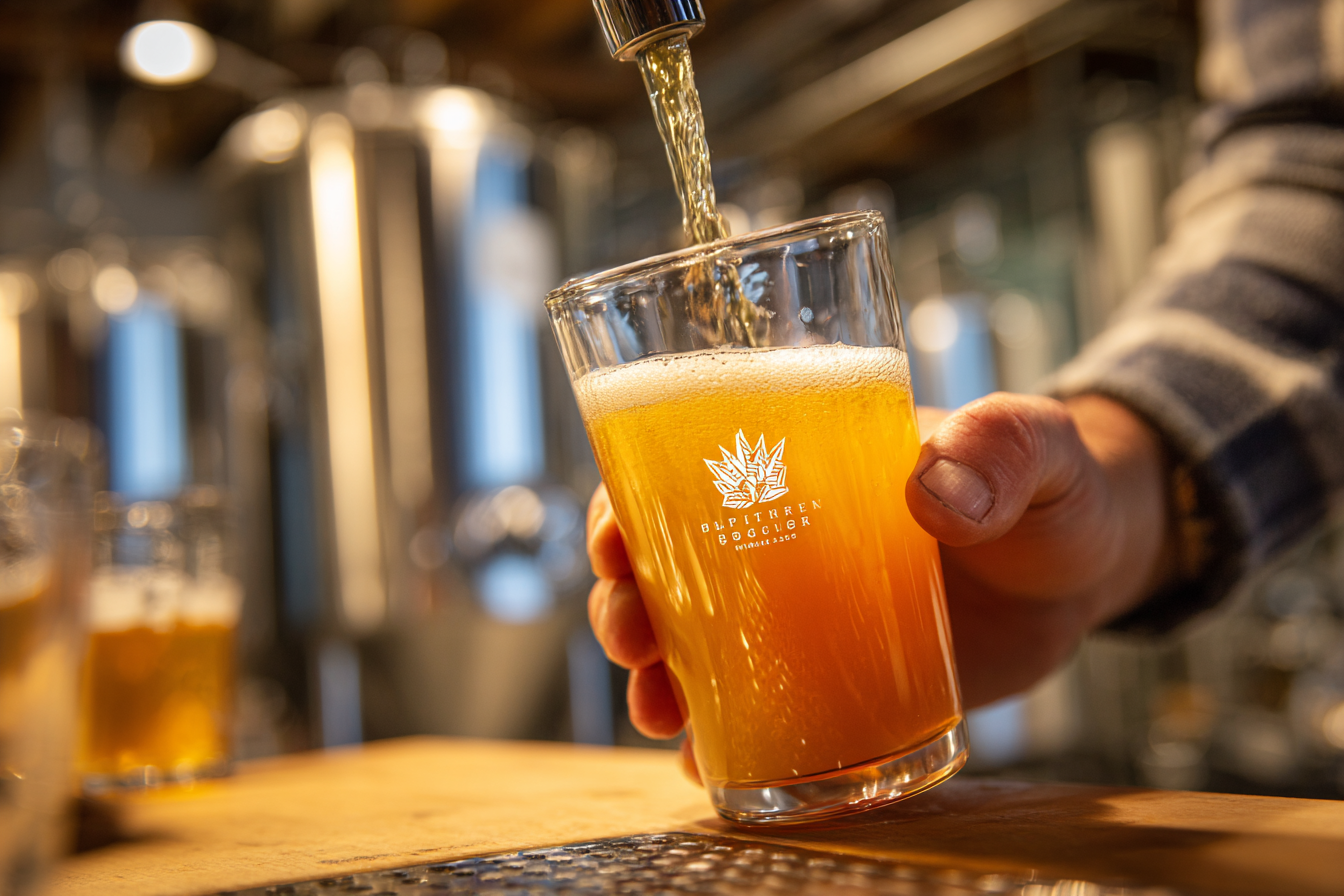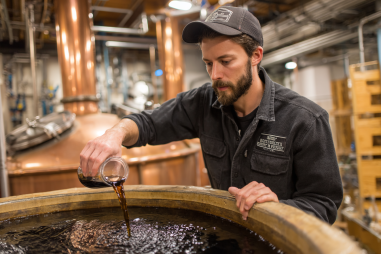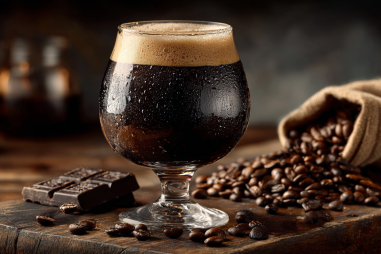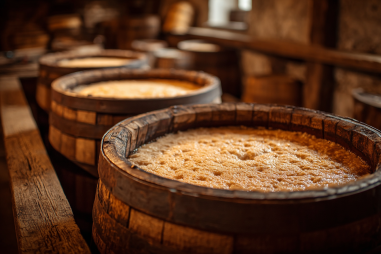The New England IPA (NEIPA) has taken the craft beer world by storm with its unmistakable hazy appearance, juicy hop flavor, and soft mouthfeel. For homebrewers and professionals alike, mastering the New England IPA brewing process requires an understanding of both the science and artistry behind this distinctive style. This guide walks you through each essential step — from ingredient selection to fermentation and packaging — so you can craft a NEIPA that delivers that bold, aromatic experience enthusiasts crave.
Introduction to New England IPA Brewing
The New England IPA is celebrated for its hazy, opaque look, juicy tropical fruit flavors, and a smooth, creamy body that sets it apart from traditional IPAs. Unlike its clearer West Coast cousin, the NEIPA emphasizes late hop additions, yeast character, and specific brewing techniques that create haze and balance bitterness with aroma and flavor. Brewing a NEIPA involves carefully controlling haze production and maximizing hop aroma without delivering an aggressively bitter profile. Getting the process right ensures a beer that is both visually appealing and deliciously drinkable.
Selecting the Right Ingredients: Malt, Hops, Yeast, and Water
Every great NEIPA starts with quality ingredients tailored to its unique profile.
Malt
The malt bill typically leans heavily on pale malt as the base, but also includes generous amounts of malted wheat and oats. Oats are key for creating the beer’s signature creamy mouthfeel and haze, while wheat contributes additional protein to support haze stability. Some brewers add a touch of acidulated malt to balance pH and enhance hop brightness.
Hops
NEIPAs demand vibrant, juicy hop varieties that impart tropical fruit, citrus, and stone fruit notes with minimal bitterness. Popular choices include Citra, Mosaic, Amarillo, Galaxy, and El Dorado. To maximize the juicy character, hops are typically added late in the boil, during whirlpool, and heavily during dry hopping.
Yeast
Yeast strains used for NEIPA tend to be English ale strains or specific American strains known for their fruity ester production and mineral haze contribution. Yeast such as Vermont Ale yeast (Wyeast 1318) or London Ale III (White Labs WLP007) are favorites because they create a soft mouthfeel, subtle fruity esters, and help maintain haze stability.
Water
Water chemistry in NEIPA brewing often favors a higher chloride to sulfate ratio. This softens the bitterness and enhances the beer’s full, smooth body. Brewers typically target chloride levels around 150-200 ppm with sulfates kept much lower, around 50-75 ppm, to reduce any harshness.
Mash Techniques for Haze and Mouthfeel
The mash process is critical in developing the NEIPA’s lush body and haze. A slightly higher mash temperature, usually around 154°F (68°C), promotes the production of dextrins, which contribute to a fuller mouthfeel. Including a high proportion of oats and wheat in the grain bill encourages proteins and beta-glucans that help create the hazy appearance.
Some brewers also experiment with a double-infusion mash or a protein rest to enhance haze stability. Be mindful that overly long or hot protein rests can sometimes create off-flavors, so it’s important to balance these techniques based on malt character and desired beer profile.
Timing and Methods of Hop Additions
Hop addition timing is an essential factor in defining a NEIPA’s flavor and aroma profile. Unlike traditional IPAs which emphasize bitterness through early boil additions, NEIPAs minimize early kettle hopping.
- Late Whirlpool Additions: Adding hops during whirlpool at temperatures around 170-180°F (77-82°C) extracts volatile oils responsible for juicy flavors without creating excessive bitterness.
- Late Boil Additions: Small late boil additions (last 5 minutes or less) help layer hop aroma.
- Primary Fermentation Dry Hopping: Hop additions during active fermentation allow biotransformation — the interaction between yeast and hop compounds — which intensifies juicy and fruity hop aromas.
- Post-Fermentation Dry Hopping: Often a second dry hopping phase after fermentation further boosts aroma without adding bitterness.
Fermentation Tips for Softness and Haze Retention
Fermentation conditions significantly influence the softness and haze typical of the NEIPA style. A moderate fermentation temperature (around 68-70°F or 20-21°C) works well for yeast strains that produce fruity esters and enhance body without creating off-flavors.
Maintaining proper yeast health and pitching rates is vital to avoid unwanted sulfur or vegetal notes that can detract from the beer’s juicy character. Additionally, limiting oxygen exposure during fermentation helps preserve freshness and hop aroma.
Fermentation duration is generally a little longer than West Coast IPAs to allow biotransformation to occur fully and develop haze stability. Some brewers avoid cold crashing or filtration to maintain haziness, opting instead for gentle fining agents if any.
Dry Hopping Strategies to Maximize Aroma
Dry hopping is where NEIPAs truly come alive with vibrant tropical, citrus, and dank aromas. To maximize aroma:
- Use a combination of hop varieties to achieve complex layers.
- Perform hop additions at different fermentation stages to tap into biotransformation benefits and preserve aroma compounds.
- Cold temperatures for dry hopping can reduce hop creep and minimize harsh bitterness, but some brewers prefer warmer dry hopping to coax more ester transformation.
- Consider hop bursting — using large quantities of hops — to amplify juicy notes without extra bitterness.
One tip to avoid drying out the beer is to balance large dry hop quantities with dextrins and malt sweetness from the mash.
Packaging and Storage Considerations
New England IPAs are best enjoyed fresh to capture optimal hop aroma and flavor. Packaging should minimize oxygen pickup using techniques like closed transfer, purging cans or kegs with CO2, and using low-oxygen caps or seals.
Cold storage at around 35°F (2°C) helps preserve hop aromatics and reduce the effects of oxidation. NEIPAs tend to have a shorter shelf life than traditional IPAs, so aim to consume within a few weeks of packaging.
Troubleshooting Common Brewing Challenges
Some challenges specific to NEIPAs include:
- Excessive Bitterness: Reduce early hop additions and avoid too high dry hop temperatures.
- Bitterness Masking Hops Aroma: Increase late kettle and whirlpool hops, and harness biotransformation during fermentation.
- Haze Breakdown: Avoid filtration, excessive cold crashing, and enzymatic clearing agents. Maintain protein content through malt choice.
- Poor Mouthfeel: Boost oats and wheat content, and control mash temperature for dextrins.
- Off-Flavors: Use healthy yeast, avoid oxygen exposure, and maintain proper sanitation.
Bringing It All Together
Brewing a stellar New England IPA involves a harmonious blend of ingredient selection, mash techniques, hop timing, and fermentation details geared toward that juicy, hazy, and aromatic profile. Paying attention to how malt, yeast, water chemistry, and hop management interact unlocks the secrets to a smooth, hazy IPA that captures the essence of the style. Whether you’re a seasoned brewer or just diving into NEIPAs, applying these step-by-step insights will help you craft beers that shine with luscious tropical notes and a soft, drinkable finish. Raise a glass to mastering the art and science behind one of craft brewing’s most exciting styles!







